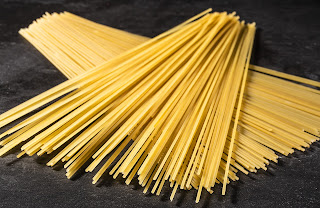Charcuterie board
A really good charcuterie board contains multiple interesting flavor combinations. It invites your guests to find their favorite mix and match flavor ensembles.
 One of the essential skills of chaphood is the ability to throw together a cold platter. It is a fine way to escape having to cook and still put on a feed for guests.
One of the essential skills of chaphood is the ability to throw together a cold platter. It is a fine way to escape having to cook and still put on a feed for guests.A good charcuterie board begins with good meat, not the cheap stuff. Use several kinds. Do not be afraid of unconventional choices such as braised beef or Chinese roast pork. There seems little reason not to include a few strips of crispy bacon. Nearly everyone likes bacon and it is quickly and easily prepared using the microwave.
Italy appears to have made cold meats a national priority. There are a couple dozen varieties of salami, there are cured meats such prosciutto, and lots and lots of other types. I consider a stop at the Italian market essential in setting up a cold dinner. While I am there I get some olives too, to serve on the side.
For pâtés and potted meats, though, the French win the palm, so I need to make another stop if I am including such items in the dinner.
I like to include at least one sharp cheese, such as cheddar or aged sharp provolone. If the meats are very strongly spiced, consider using something in the blue cheese family; the pungent flavor is not drowned out by highly spiced meats, as a milder cheese would be. Stilton works very well.
Sides and accents should be chosen to complement the meats. Some chefs use fig jam as one of the sides, and the fig flavor works well, but I consider the jam too sweet to allow the fig flavor to be fully tasted, so I place a some dried figs on the board instead. For a sweeter accent, I use a sticky, spicy sauce that I make by stirring quatre epices into unsulfured molasses. Some chefs consider mango chutney an essential of this sort of meal.
Dijon mustard is popular as a tart accent. Another I like is sun-dried tomatoes marinated in a tart white wine such as pinot grigio, then sprinkled with a small amount of coarse-grained salt. Mixed pickles, such as mild giardiniera mix, also work well. For a hot accent, pickled hot peppers are quite nice, or the ever-popular sriracha sauce.
Fruits and nuts add to the variety of flavors and contribute to nutritional balance. Grapes work well, and strawberries, and kiwis, and you can try bits of melon. There is actually no rule about what fruits go with what meats, so be as original as you wish.
Some sort of bread completes the meal, and again there is no rule. Baguettes work well, but so does Scandinavian crispbread or warmed pitas.
A really good charcuterie board contains multiple interesting flavor combinations. It invites your guests to find their favorite mix and match flavor ensembles. So, as you are selecting ingredients for your platter, give preference to flavors that will complement two or more of the other ingredients.
And that's all there is to it. A charcuterie board is my favorite solution when I have to come up with food for guests on short notice, far more elegant than sending out for pizza and at least as quick if you have ingredients already on hand.

Comments
Post a Comment